Guitar cables are an interesting topic to look into because one would assume that a balanced cable would be much better, however, they’re simply not needed.
Balanced cables are great for providing a clean signal without interruptions and interference from the surrounding environment, but guitar jacks don’t actually need this type of cable for a couple of reasons.
Generally, guitar jacks are mono rather than stereo. Stereo configurations are superfluous unless the guitar uses specialized elements like active pickups, preamps, or other components. These circumstances may require the third prong of a stereo cable to act as a power switch.
A lot of people wonder if it would be a much better idea to use a stereo jack just because a stereo jack has all the capabilities and more of what a mono jack can do, but not the other way around. However, there is no clear difference between using one over the other, for example, plug a stereo jack into your guitar and then a mono jack and then ask if you can tell the difference. You won’t be able to.
Mono Versus Stereo Guitar Cables
Mono Jacks
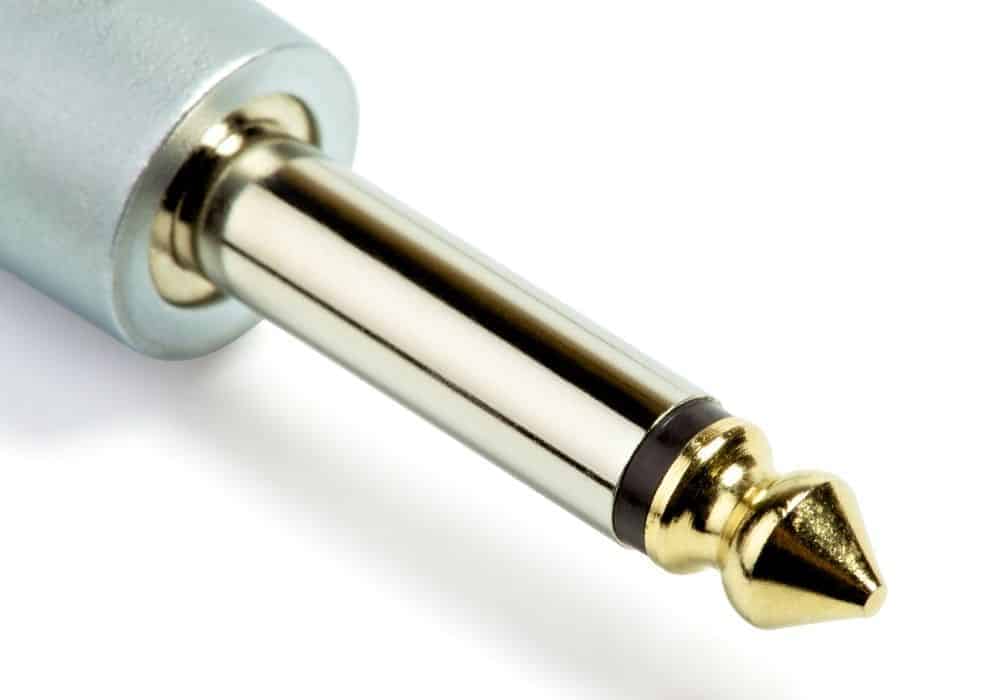
To put it simply, there are two types of guitar jacks that are most commonly used in the profession: mono and stereo. It’s actually possible to tell them apart by looking at the end of the cable.
Mono jacks tend to have one ring around the tip like what you can see above, and then stereo jacks have two rings around them like what you can see below. A mono cable will only have two prongs on it, the ground wire and then the power-live wire.
The live wire is what’s used to actually send power to the pickups. Stereo jacks, as we’ll explain below, have just one additional prong which sets them apart from a regular mono jack.
Stereo Jacks
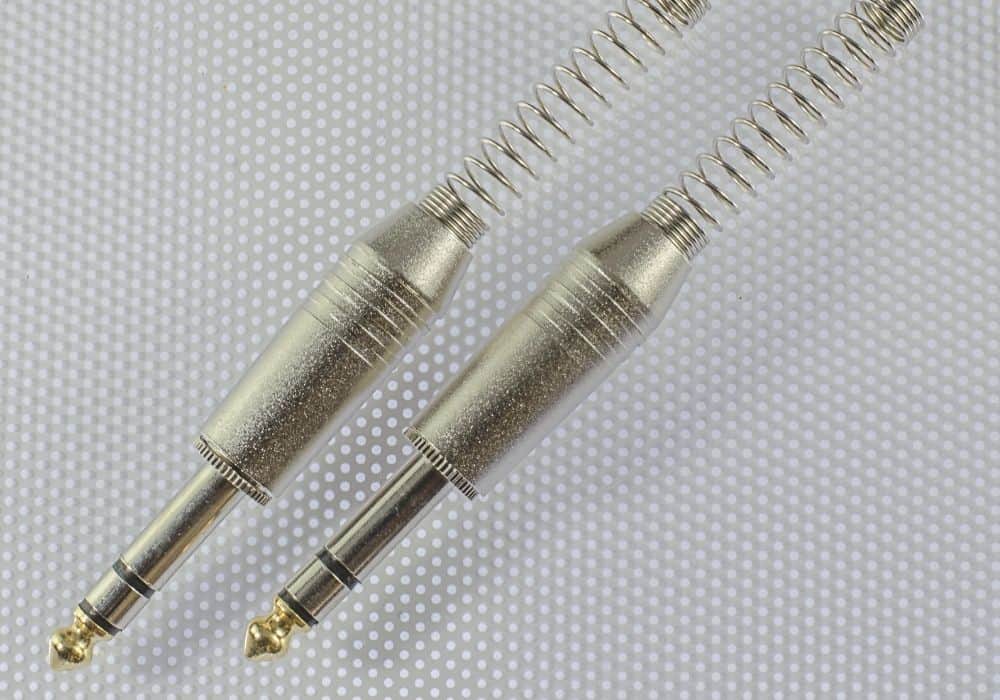
As I just mentioned, a stereo jack will have three prongs rather than just two. The stereo jack has the same parts as the mono jack, notably, the ground wire and then the power-live wire.
However, what’s different is that the stereo jack has an auxiliary prong which can be used for power switching.
This is also the reason why stereo jacks can do all of the things that mono jacks can, and a bit more.
When people discover this, they ask why then aren’t all guitar cables stereo if the cable can do more? If balanced stereo cables are better for sending clean signals and they have more capabilities, how come players aren’t using them?
What’s the Purpose of Using a Stereo Jack for a Guitar?
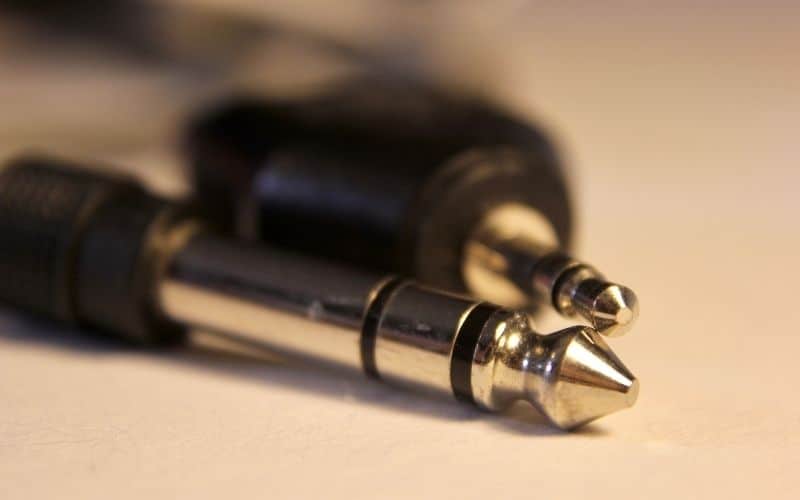
There’s simply no denying that guitar cables are almost always mono jacks. Next time you go to a guitar store, take a look at every single guitar cable there and I bet you they will all have the same format.
The cable has one prong with a tip and one ring around it. You’ll almost never see a cable that has the TRS style, which stands for Tip, Ring, and Sleeve.
In case you don’t know, the TRS-style cable is used for things like headphones, which I already explained in my article on unbalanced and balanced cables.
Mono jacks are usually all that’s necessary for a guitar to work as it should, although, as I noted above, there are exceptions to the rule like if the guitar has active pickups or has other electronics like what can be seen in a guitar with a killswitch, for example.
According to the Iron Age Blog, the additional prong, or the auxiliary prong, as it’s called, is more convenient and functional for this purpose because its extra prong acts as an on/off switch.
This capability (its ability to switch on and off), allows guitar technicians and manufacturers to make guitars with kill switches.
One of the sure-fire ways of telling that a cable uses a stereo jack input is through the use of the LED light on the kill switch.
It’s actually the stereo cable that’s making this possible because when you plug in the stereo cable, it activates the on/off switch inside that then turns the light on so you know it’s working. When removed, it turns the light off, of course.
Additionally, stereo cables tend to be balanced which means they have another wire that allows them to send cleaner, uninterrupted, signals to wherever you need them to go.
So not only does a balanced stereo cable have the ability to do more, but they’re also better for sending clean signals across distances.

With all this in mind, people may ask why one would even bother to use a mono jack considering a stereo jack is just so much better for different purposes. After all, it does all of the same things that a mono jack does but more.
If you’ve read my article on why guitar cables can’t be used for vocals, you would know a lot of this stuff comes down to cost and the average consumer’s demands.
Why Not Use A Stereo Jack Instead of a Mono Jack?
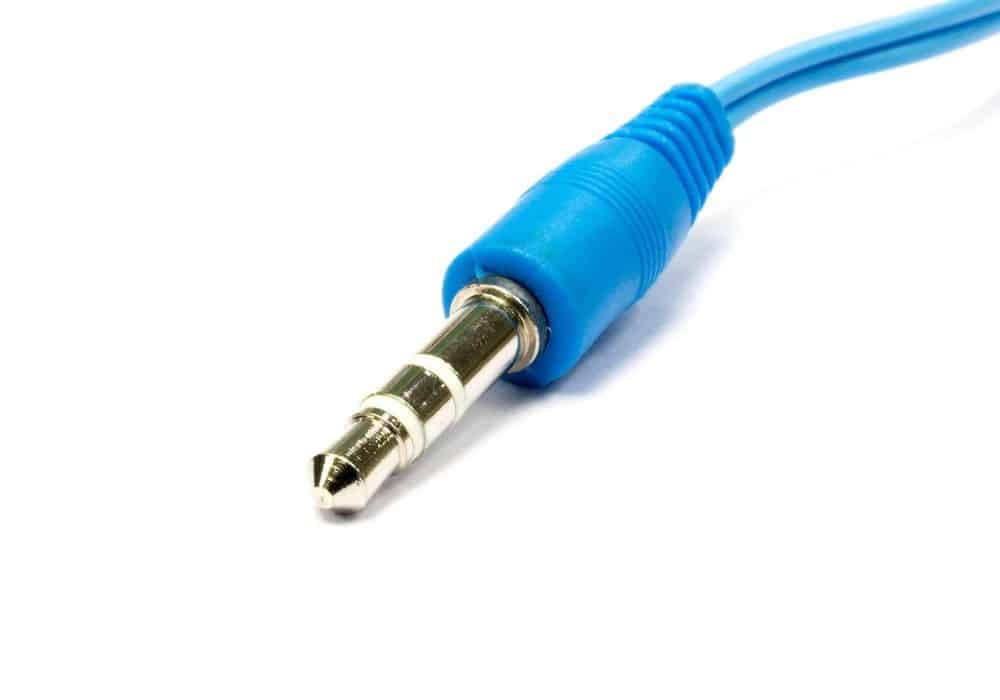
Perhaps the most important reason why guitar cables don’t use a stereo jack by default has to do with sound and the price of adding more parts.
In other words, while there might be a difference between the two in terms of sound quality, it’s so utterly minuscule that no one would ever notice it. Additionally. there is simply no need to use this kind for many guitars unless you have a kill switch or some kind of special active pickup.
Put simply, why would a manufacturer add another feature to the cable if it costs them more money and doesn’t allow them to add any other useful functionalities or benefits?
Furthermore, the price of adding in the extra prong would have to be passed along to the consumer, which means the price would go up.
If the price goes up, it’s a chance for a competing company to just make a mono jack that’s cheaper, works just as good, and is, therefore, more competitive.
Skeleton Jacks
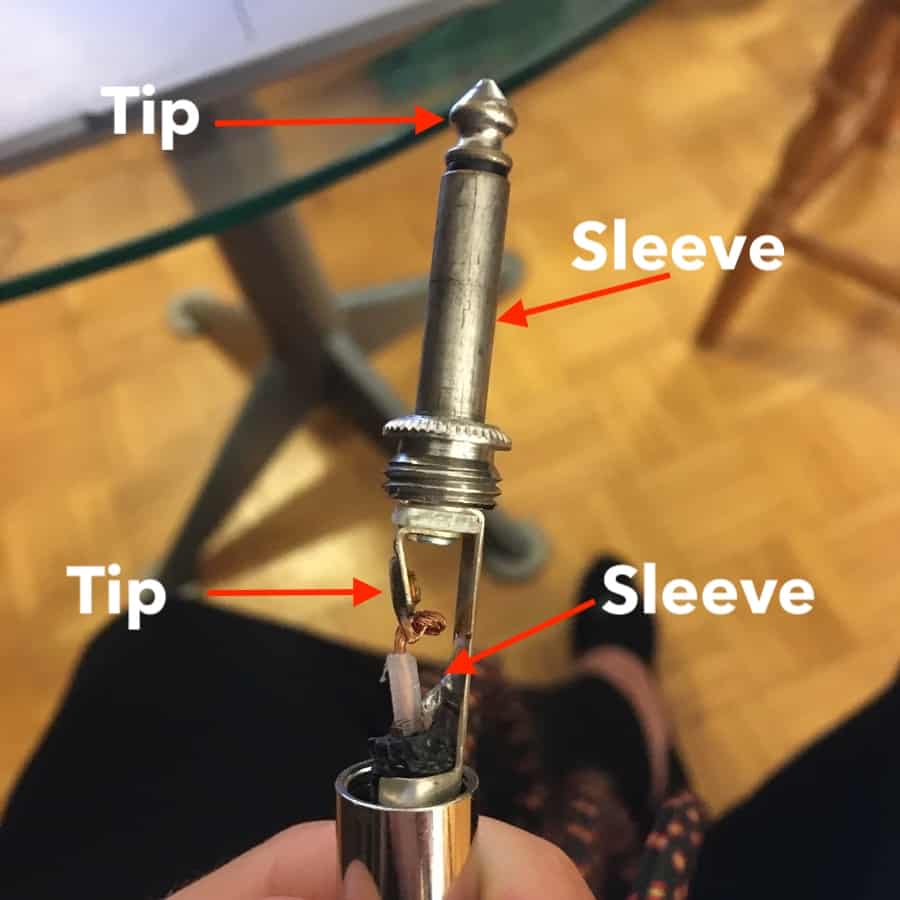
Another thing that’s worth mentioning is that most guitar jacks are made using what’s called the “skeleton” style because when taking it apart to fix or repair it, you can also see all of the inner components.
As you can see from the image above, this type of jack has a skeletal vibe, so to speak. On the other hand, there are different styles of jacks that are called “barrel jacks,” and they look kind of like how they’re labelled.
The barrel jack image like what you can see below is not a guitar jack, but it utilizes the same principle, in the sense that it is literally shaped like a barrel.
Originally, I thought the barrel jack had the components on the inside, but the components are on the end of the barrel in the same way that they are on a skeleton-style jack.
Barrel Jacks
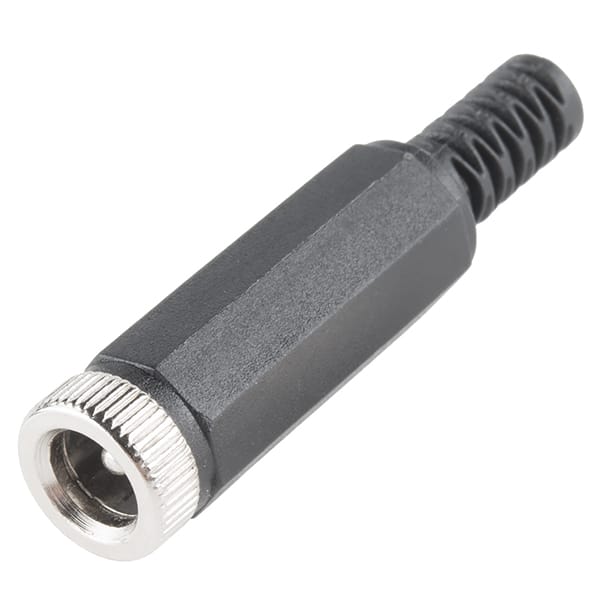
Barrel jacks work the same way that skeleton jacks do, they just look a lot different because all of the inner components are at the end of the barrel jack. According to the people over at the Iron Age Blog again, there is actually another type of jack out there.
This additional jack offers even more versatility and functionality, and it has four prongs inside it. It’s called the “switched jack,” and it allows for guitars to have more electronics like a piezo pickup and regular pickups for example.
With this type of wiring, you could send one signal to the amp, and then the other one could go to a mixer.
The Main Difference Between Wiring Mono and Stereo Jacks
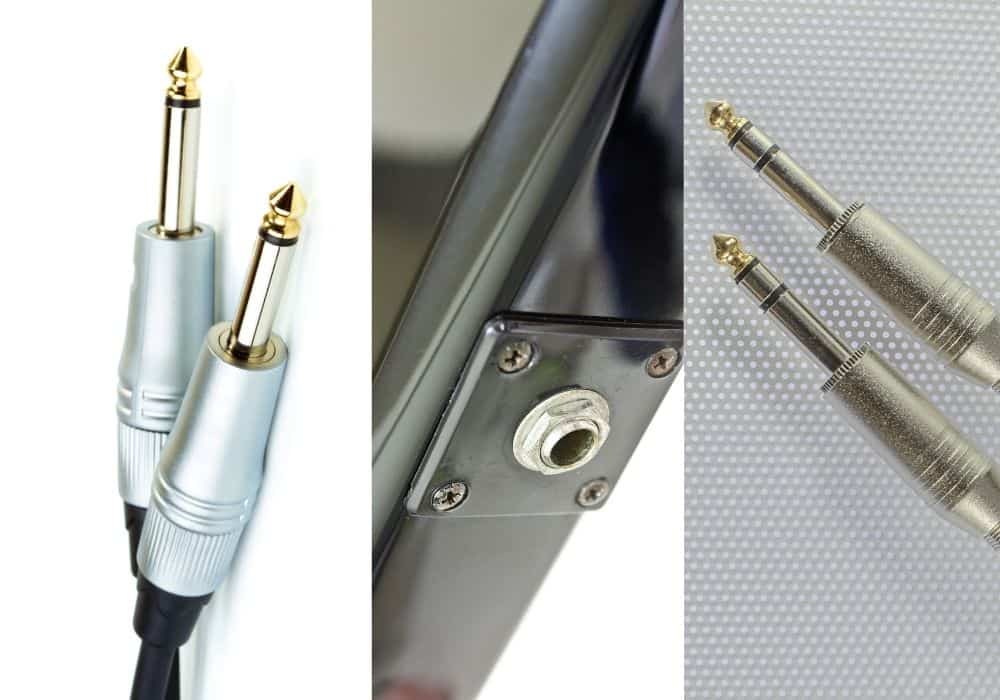
As I briefly explored above, mono and stereo jacks look different as a result of their TRS or TS components. By this, I mean there is the TS cable, which stands for “tip-sleeve,” and then there is the TRS cable which stands for “tip-ring-sleeve.”
A regular headphone jack is a great example of a TRS jack on account of its accessibility to us all. Headphones have a left and right side, which is why the cable needs to be stereo.
Another great brand to get for cables is actually Monster Cables because if they fail, you can send them back to the company and they’ll ship you brand new ones free of charge due to their lifetime return policy which you can check out on their website.
Other Articles You May Be Interested In
YouTube Video Tutorial
Gear Mentioned
1) Regular D’Addario 1/4″ Guitar Cable
Truthfully, a regular 1/4″ guitar cable is going to work perfectly 99.99% of the time without much issue. There is no need to get a balanced 1/4″ cable even if you’re using active pickups on your guitar. Although some people might prefer to, it’s not necessary.
2) Stereo/Balanced 1/4″ Guitar Cable From Hosa
In the case that you wanted to try out a stereo cable for your guitar with active pickups or a killswitch, grab one of these stereo 1/4″ cables.
3) Monster 1/4″ Guitar Cable
As mentioned above, these cables are great because if they fail, you can always send them back to Monster and they’ll send new ones to replace them, free of charge.
4) Etymotic ER3SE Headphones
These are the headphones I use every single day for music. They’re great because they aim for flat or neutral frequency response, making them excellent for studying other peoples’ music and mixes while I’m out and about during the day.


 Written By :
Written By :
